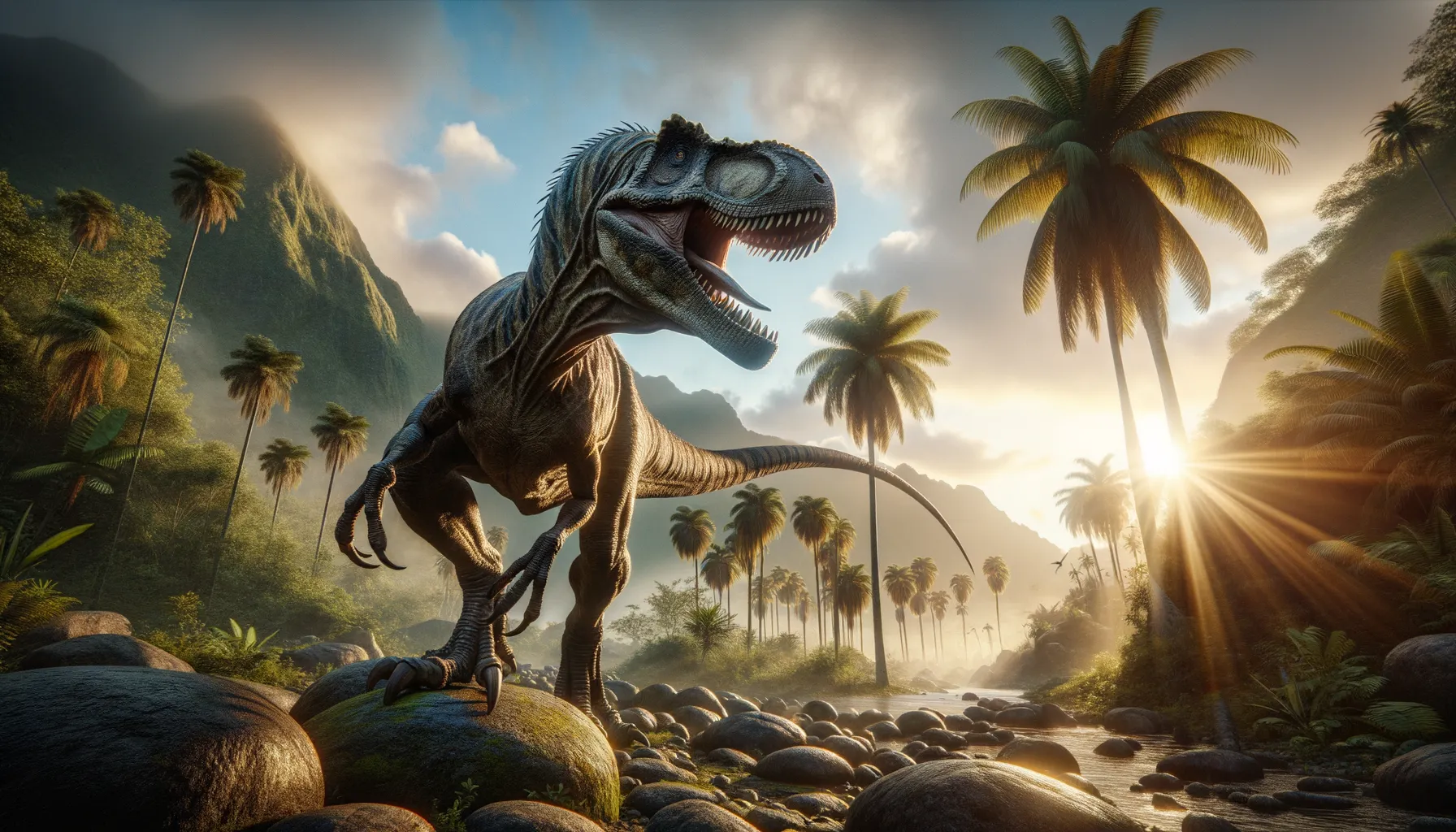
Austroraptor
Ferocious hunter of South American plains.
Period
Cretaceous
Length
Reaching lengths of up to 6 meters.
Height
About 3 meters tall at the hip.
Weight
Approximately 500 kilograms.
Austroraptor was a large and fearsome theropod dinosaur from the Late Cretaceous period. Discovered in Argentina, it is part of the dromaeosaurid family, which includes the famous Velociraptor. With a long, slender body and a generally lightweight build, Austroraptor was a formidable predator that roamed the ancient landscapes of South America.
Diet
Austroraptor was carnivorous, primarily feeding on smaller dinosaurs and possibly scavenging. Its diet likely also included fish, given its proximity to ancient water bodies.
Hunting
This dinosaur employed stealth and agility to hunt its prey, using its long arms and sharp claws. Its habitat near water bodies suggests it might have also hunted aquatic or semi-aquatic prey.
Environmental challenges
Austroraptor faced environmental challenges such as seasonal climate changes impacting prey availability. Competing predators in its ecosystem would also pose occasional threats. Natural disasters like wildfires and flooding could have altered its habitat and living conditions.
Speed
Moderate runner, not as fast as Velociraptor.
Lifespan
Could live up to 20 years.
First discovery
Discovered in Argentina in 2002.
Fun Facts
- Austroraptor was a feathered dinosaur that lived around 70 million years ago during the Late Cretaceous period.
- Unlike many of its raptor relatives, Austroraptor had short arms, making it quite unusual for its group.
- It was discovered in Argentina, which has become famous for its rich fossil sites of dinosaurs.
- Austroraptor was among the largest known dromaeosaurs, potentially reaching lengths of up to 7.5 meters (about 25 feet).
- Despite its size, Austroraptor was likely a swift and agile predator, using its strong legs to hunt.
- Its name means 'southern thief,' reflecting both its location in the Southern Hemisphere and its predatory nature.
- The fossil remains of Austroraptor include parts of its skull, which helped scientists understand more about its appearance and relationship to other dinosaurs.
Growth and Development
Austroraptor was likely born from eggs and grew rapidly during its juvenile stage. As it matured, it developed strong muscles and sharp claws, essential for hunting. Fossil evidence suggests distinct growth rings in bones, indicating seasonal growth spurts.
Habitat
Austroraptor inhabited the plains and riverbanks of what is now Argentina. Its environment was likely a mix of open areas and dense vegetation, providing both hunting grounds and cover. Proximity to water sources would have been crucial for its survival.
Interaction with other species
Austroraptor may have interacted with both prey and fellow predators in its ecosystem. It likely competed with other carnivorous dinosaurs for food resources. Intraspecies interactions could have involved territorial disputes or cooperative hunting.
Natural lifespan
In the wild, its natural lifespan could be around 15-20 years.
Reproduction
Like many dinosaurs, Austroraptor reproduced by laying eggs. Fossil evidence suggests complex nesting behaviors similar to other theropods. Parental care might have involved guarding nests and tending to young.
Social behaviour
Austroraptor may have formed small groups for hunting or protection. Evidence for social behavior includes trackway patterns and fossilized groups. Interaction within groups could have eased hunting and defense.
Fossil locations
Austroraptor fossils have been primarily found in the Patagonian region of Argentina. The type specimen was discovered in the Rio Negro Province. These discoveries have helped to shape our understanding of dromaeosaurids in South America.
